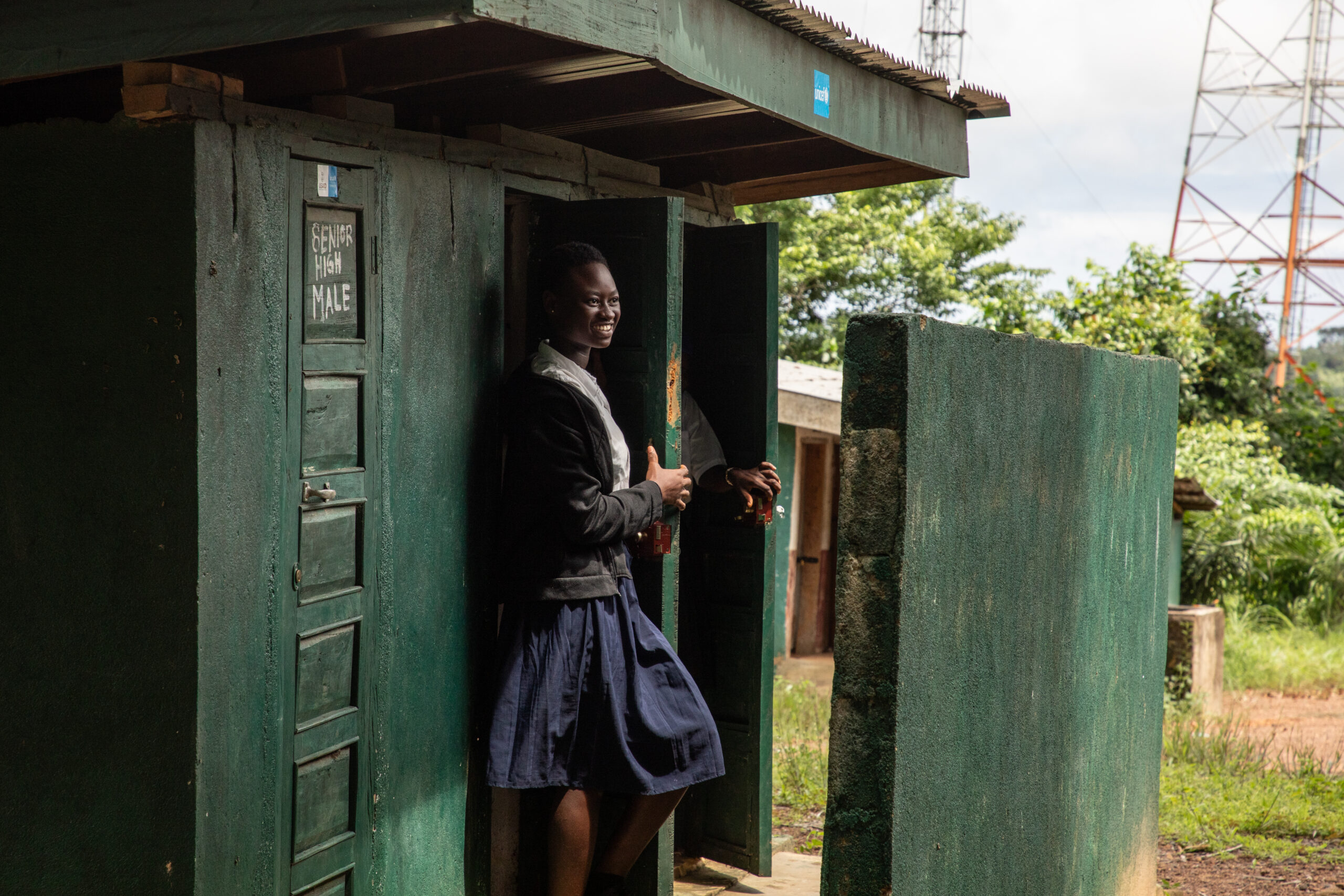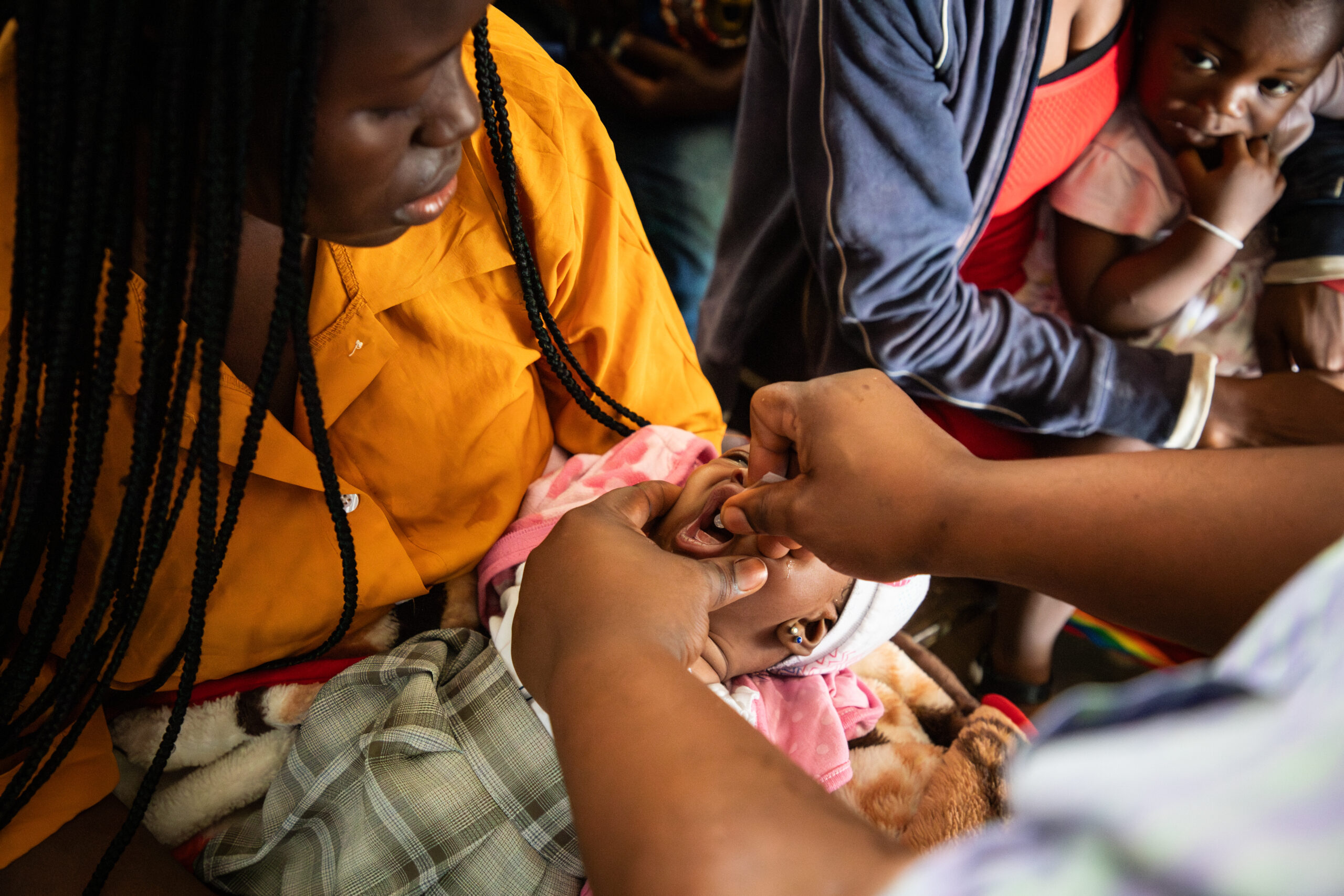West African state, Liberia
In collaboration with

October 2025 -October 2028
We create a sustainable sanitation ecosystem to improve child health and women’s empowerment. We reduce inequalities in access through a multi-faceted and participatory methodology that integrates market-based solutions and institutional engagement.
Objectives
- Ensure the durability of sanitation outcomes through a participatory community approach, with special attention to girls and women.
- Conceptualise, design, develop, test, and refine alternative sanitation models and products that can be adapted to diverse contexts and conditions, with the aim of introducing them into the Liberian market.
Beneficiaries
10,000 direct
4,300 children under 15 years old and 2,907 women

On the Ground
Endemic practice of open defecation and lack of adequate sanitation facilities in health centres. Degradation of former infrastructures created under the CLTS approach.
Despite past progress achieved through the CLTS (Community-Led Total Sanitation) approach, 35% of Liberians still practice open defecation, and only 23% have access to basic sanitation services. Only 3% of health centres have basic sanitation services, which keeps the disease burden high, especially among children.
This situation is even more difficult in rural areas and contributes to widespread health problems, child stunting, and gender inequalities. Rural communities are disproportionately affected: 57% of rural residents lack adequate sanitation facilities. Terrain, limited road access, weak local governance capacity, and the absence of financing mechanisms pose significant implementation challenges. In addition, many latrines built under the CLTS (Community-Led Total Sanitation) approach collapse easily due to the low quality of construction materials and lack of technical knowledge.
These geographic and structural limitations highlight the urgent need for resilient solutions adapted to the local context.

This is particularly evident in rural areas:
- Lack of durable sanitation infrastructure: Communities require resilient latrines that withstand environmental conditions.
- Poor hygiene practices: 97% of the population lacks access to handwashing facilities.
- Insufficient sanitation in schools and health centres: These institutions often lack adequate infrastructure.
- Limited market development: There is a shortage of sanitation businesses due to low market visibility and limited access to financing.
- Economic and social exclusion of women: Women are underrepresented in the sanitation sector, despite being primarily responsible for household hygiene.
In detail
General Project Approach:
- Post-ODF Sustainability Approach: Unlike previous CLTS interventions, this project ensures long-term sustainability through durable infrastructure and community-driven maintenance. Local entrepreneurs are trained to build more robust, context-adapted latrines, addressing one of the significant limitations of past efforts.
- Community-Led and Bottom-Up Participation: Empowers community structures such as WASH Committees, Village Savings and Loan Associations (VSLAs), and school hygiene clubs to lead change. It involves community voices in planning, implementation, and monitoring to ensure ownership and sustainability of sanitation practices and infrastructure, while strengthening institutional capacity to implement, supervise, and sustain interventions.
- Market-Based Approach: The program stimulates local entrepreneurship and supply chains, addressing both demand- and supply-side challenges. It engages local entrepreneurs and masons in the design, construction, and supply of diverse and durable sanitation products. It includes the establishment of sanitation learning hubs to promote knowledge and skills exchange, as well as guidance from a sanitation marketing coach or private firm. The project also supports the creation of diversified catalogues of sanitation products adapted to local contexts, with technical advice from the We Are Water Foundation.
- Women-Centred Model: Women’s participation in sanitation supply chains is prioritised. By integrating and training women as sales agents and entrepreneurs in the sanitation economy, the project not only improves access to sanitation but also promotes gender equality and women’s economic empowerment. Women are supported through sanitation marketing training, door-to-door promotion, and VSLA support (including access to revolving funds and business kits).
- Integration with Schools and Health Centres: This expands the scope of intervention and strengthens WASH resilience among children and health service users.
- Evidence-Based and Adaptive Design: The project begins with a landscape analysis and continues with real-time monitoring, the creation of feedback mechanisms and data documentation, and the development of learning hubs. It is continuously adapted and refined to effectively respond to local needs, including pilot-testing latrine models and making adjustments based on emerging evidence.
- Scalability and Replicability: Evidence generated from pilot testing and adaptive learning enables replication in other regions with necessary contextual modifications, directly contributing to Sustainable Development Goals (SDGs) 3, 4, 5, 6, 10, and 13. Its purpose is to create a sustainable sanitation ecosystem that improves child health and women’s empowerment while reducing inequalities in access.

Program:
We develop a post-Open Defecation Free (ODF) sustainability program that builds on previous CLTS efforts and introduces market-based sanitation models.
The project targets communities previously certified as ODF in priority counties, aiming to improve the durability and accessibility of sanitation infrastructure, promote hygiene practices, and empower women through their active participation in the sanitation value chain.
The program is implemented in three phases:
Year 1: Focuses on landscape analysis, stakeholder engagement, development of a sustainability framework, and initial capacity building. Local masons, sanitation entrepreneurs, and women-led Village Savings and Loan Associations (VSLAs) are trained. In addition, a sanitation marketing coach supports local actors in promoting durable latrine solutions.
Year 2: Involves the expansion of sanitation learning hubs, construction of model latrines for vulnerable households, and stronger linkages with schools and health centres. Community structures such as Parent-Teacher Associations (PTAs), school hygiene clubs, and WASH Committees (Water, Sanitation and Hygiene) are mobilised to promote behaviour change and ensure sustainability.
Year 3: Emphasises monitoring and evaluation, documentation of lessons learned, refinement of sanitation technologies, and advocacy for policy and standards reform. The project will continue to support the maintenance of ODF status, local latrine production, and institutional ownership.
Evaluation of the Expected Impact in the Area
The project’s expected impact is multidimensional, addressing health, gender, education, economic empowerment, and environmental sustainability. The impact will be evaluated through quantitative and qualitative indicators, based on baseline assessments, real-time monitoring, and end-line evaluations. Below is a breakdown of the expected impacts and how they will be evaluated:
A. Health Impact
- Reduction in the incidence of waterborne and sanitation-related diseases such as diarrhoea, malaria, and respiratory infections.
- Improved child health and nutrition, especially reduced stunting due to better hygiene practices.
B. Gender and Social Impact
- Increased women’s leadership and economic participation in sanitation supply chains.
- Enhanced dignity, safety, and privacy for women and girls, especially in schools and communities.
C. Education Impact
- Improved sanitation facilities in schools, leading to better attendance and learning conditions, especially for girls.
- Enhanced hygiene awareness among students.
D. Economic and Market Impact
- Increased availability and accessibility of affordable, durable sanitation products and services.
- Stimulation of the local sanitation market through training and engagement of entrepreneurs.
E. Institutional and Systemic Impact
- Strengthened local governance and monitoring systems for sanitation service delivery.
- National adoption or refinement of technical standards for sanitation products and practices.
F. Environmental Impact
- Decrease in open defecation and contamination of local water sources.
- Promotion of environmentally sound sanitation technologies.
Sustainability Prospects
The project emphasises local ownership, market-based solutions, institutional engagement, and capacity building, ensuring that it can be sustained beyond the funding period.
The key sustainability prospects are:
- Community ownership and participation
- Women’s empowerment and economic inclusion
- Market-based sanitation models
- Institutional capacity and policy integration
- Financial sustainability
The project’s multi-pronged strategy ensures that sanitation improvements are not only achieved but also sustained through:
- Strong community and institutional anchoring
- Local market stimulation
- Empowerment of women and youth
- Financial and operational capacity building
- Evidence generation for scale-up and policy influence





